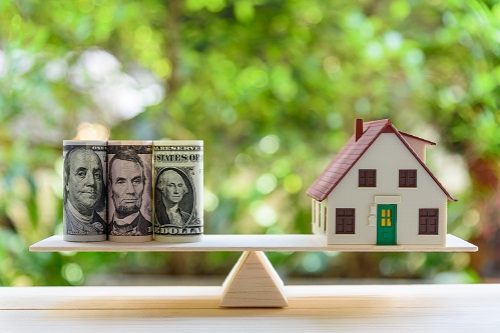- Will insurance cover a 20 year-old roof?
- Does home insurance cover roof replacement?
- Does the age of the roof affect insurance rates?
- How to get insurance to pay for roof replacement
- Are there insurance coverage limitations on my roof?
- Does homeowners insurance cover roof leaks?
- Filing a homeowners insurance claim for roof damage
- Frequently asked questions
Will insurance cover a 20 year-old roof?
As long as your home insurance policy is in force and you accurately disclosed the age of the roof on your application, your insurance policy will cover a 20-year-old roof. Roof coverage is a standard part of a home insurance policy.
Insurance companies are wary of homes with older roofs due to the risk they present. That makes it more difficult to get insurance for a home with an old roof, and in some cases insurers may nonrenew policies on home with aging roofs. But, if you have had your insurance policy in force for a while and the company has continued to renew your policy even as the roof hits 20 years old, it will be covered.
Does home insurance cover roof replacement?
The dwelling coverage portion of your homeowners insurance covers roof replacement when a covered peril caused the damage. Some commonly covered perils include hailstorms, fire and wind.
However, if the damages are due to wear and tear or lack of proper maintenance, they won't be covered by standard homeowners insurance, and you’ll have to pay out of pocket to replace the roof. In other words, home insurance doesn't cover bad roof replacement or old roof replacement, just a roof that was damaged suddenly and accidentally.
Does the age of the roof affect insurance rates?
Insurers consider a roof’s age and condition when deciding whether to issue a policy and how much that policy will cost.
Some insurers refuse to renew existing homeowner insurance policies on houses with roofs older than 20 years unless they pass an inspection. Insurers won’t renew a policy that fails inspection without a roof replacement.
Other insurers don’t write new policies for homes with roofs more than 20 years old. Or, they’ll only pay actual cash value for roof replacement for older roofs when they’re damaged. This means they will only pay the depreciated value of the roof, not the cost of a new one.
If you do get coverage for a home with an older roof, you can expect to pay a lot more. That's because your roof is high-risk, and homeowners insurance companies charge higher rates when the likelihood of a claim is higher.
"If you have a roof that has lasted 20 years, then you've probably exceeded the roofing membrane life expectancy,” says Gerald Delaune, senior building envelope consultant at Childress Engineering Services Inc. in Richardson, Texas. “Chances are that at that point, there are issues within the roofing system that cannot be seen (such as moisture within the system), which could potentially deteriorate the deck; it would be worth your money to replace the roof.”
Replacing a roof can cost $10,000 or more, but you might need to make that investment to keep coverage.
Chip Merlin, president of Tampa-based Merlin Law Group, said home insurers have tightened underwriting requirements for older homes, especially regarding roofs, plumbing and electrical systems.
“Roofs are the biggest issue," Merlin says. "Generally, in geographic areas where the demand for insurance exceeds the insurance company's appetite for risk, the greater the underwriting criteria come into play. Florida is such a state, but we are also seeing it along all coastal areas and in areas where hail damage is most prevalent."
Merlin adds that while some companies are tightening inspection requirements and requiring homeowners to cover the cost of these inspections for renewals. And some refuse to write new policies for homes with roofs older than 20 years.
"The trend is to require an older roof – 15 to 20 years plus – to have an inspection to get a renewal. This is probably a good policy because it promotes better maintenance and reduces needless loss," Merlin says.
How to get insurance to pay for roof replacement
Here are a few tips to follow to increase your chances of the insurance company paying for a roof replacement:
- Keep copies of any previous roof inspections that show there was no damage prior to the event that caused the current damage.
- Maintain your roof regularly and keep records of any maintenance work you have done.
- Contact a reputable roofing company and have them inspect the roof and create their own inventory of damages.
- Authorize the roofing company to interact with the insurance company on your behalf.
- Be prepared to appeal any insurance company decisions and hire a public adjuster to work on your side if necessary.
Are there insurance coverage limitations on my roof?
Home insurance policies can include coverage limitations for roofs.
Scott deLuise, executive chairman of the board and president at Adjusters International/Matrix Business Consulting, Inc. suggests that homeowners carefully read the existing or proposed policy to look for that information.
"Coverage scope and exclusions are a big deal. Ask another insurance company for a policy bid at renewal if it contains a wood shake endorsement or an exclusion for roofs over 20 years old," deLuise says.
DeLuise says many insurers on the West Coast are adding new endorsements at renewal for the area's popular wooden shingle roofs due to the fire risk. A wood shake or shingle endorsement is a written document attached to an insurance policy that excludes or restricts coverage of wooden shingle or shake roofs.
He also says he sees new cosmetic roof exclusions on many client policies, meaning the homeowner must pay for any updates that the insurance company deems “cosmetic.”
"So, for example, if you have a metal roof and it gets hail dents in it, they won't replace the roof because that's cosmetic and doesn't limit the functionality of the roof. I think that's a really bad criterion because it's so subjective," deLuise says.
Does homeowners insurance cover roof leaks?
An insurer may cover a leaky roof. However, insurers also require homeowners to prevent leaks and subsequent damage. It’s up to the homeowner to take the necessary precautions to maintain the property. An insurer might not cover the damage if a leaky roof isn't fixed properly.
Home insurance policies usually cover roof damage caused by fire, vandalism and “acts of God,” such as hurricanes and tornadoes. Whether they will pay for damage caused by wind, rain or hail is determined by your policy and the age of your roof.
A damaged 10-year-old roof will likely get coverage for a full replacement. A 20-year-old roof or older might only result in an insurer reimbursing you for what an older roof is worth at the time of the damage – after decades of wear and tear.
Whether you’re reimbursed partially, fully or not at all depends on your policy, so check with your insurance company if you experience any damage.
Filing a homeowners insurance claim for roof damage
Your insurer and policy provide the timeframe to file a roof insurance claim. It’s best to contact your insurer as soon as there is damage.
Here are steps to take if you need to file a claim because of roof damage:
- Contact your insurance company immediately and find out what your policy covers.
- If possible, provide “before” and “after” photos to your insurance company so they can evaluate the damage.
- Schedule a time for an insurance claims examiner to review the damage.
- Find a qualified roofer as soon as possible. A damaged roof does not properly protect your home, so you should get it repaired quickly.
Delaune says replacing a roof can cost anywhere from $9 to $15 per square foot. He suggests that homeowners visit the Roof Consultants Institute's website to find a qualified roof consultant to assess the roof or the National Roofing Contractors Association (NRCA) for a qualified roofing contractor before making this major investment.
Frequently asked questions
Will insurance cover a 25-year-old roof?
Yes, if the policy is in force. You may be required to submit to a roof inspection to renew your coverage.
How old can a roof be for insurance?
Each company has its own standards for roof age, but at 20 years old many companies will require an inspection or refuse coverage.
Can I get homeowners insurance with an old roof?
Yes, but it may be more difficult and you will likely pay more.






